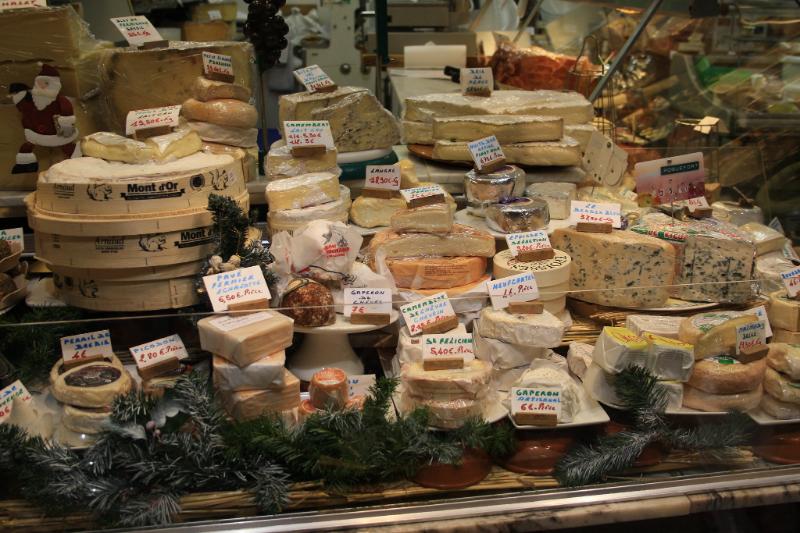Alsace Pinot
Blanc
Vin Tranquille
Servir à 08-10. °C (46-50 °F)
Cépage principal : Pinot blanc
“ Peut être bu dès sa commercialisation.
Potentiel de garde (estimation) : 1 à 2 ans. ”

Photo de Jorge Cancela (CC BY 2.0)
https://www.flickr.com/photos/jorgecancela/6472486721/
États-Unis. Indiana.
Fromage au lait pasteurisé de chèvre à pâte molle et à croûte naturelle recouverte de cendre végétale culinaire et d'une couche supplémentaire de cendre coupant le fromage en deux.
Affinage : 1 semaine.
Blanc
Vin Tranquille
Servir à 08-10. °C (46-50 °F)
Cépage principal : Pinot blanc
“ Peut être bu dès sa commercialisation.
Potentiel de garde (estimation) : 1 à 2 ans. ”
Blanc
Vin Tranquille
Servir à 08-10. °C (46-50 °F)
Cépage principal : Pinot gris
“ Préférer un vin d'au minimum 1 an.
Potentiel de garde (estimation) : 3 à 10 ans. ”
Blanc
Vin Tranquille
Servir à 08-10. °C (46-50 °F)
Cépage principal : Riesling
“ Préférer un vin de plus de 1 an.
Potentiel de garde (estimation) : 5 à 10 ans. ”
Rosé
Vin Tranquille
Servir à 10-12. °C (50-54 °F)
“ Préférer un vin de 1 à 3 ans.
Potentiel de garde (estimation) : 3 à 5 ans. ”
Blanc
Vin Tranquille
Servir à 10-12. °C (50-54 °F)
“ Peut être bu dès sa commercialisation.
Potentiel de garde (estimation) : 5 ans. ”
Blanc
Vin Tranquille
Servir à 12-14. °C (54-57 °F)
“ Préférer un vin de 2 à 4 ans.
Potentiel de garde (estimation) : 3 à 7 ans. ”
Autres boissons
Servir à 04-06. °C (39-43 °F)
“ Peut s’appeler Witbier, white beer ou witte. ”
> voir la ficheRouge
Vin Tranquille
Servir à 14-17. °C (57-63 °F)
“ Préférer un vin d'au minimum 2 ans.
Potentiel de garde (estimation) : 5 à 10 ans. ”
Blanc
Vin Tranquille
Servir à 10-12. °C (50-54 °F)
“ Préférer un vin d'au minimum 2 ans.
Potentiel de garde (estimation) : 5 à 7 ans. ”
Blanc
Vin Effervescent
Servir à 08-10. °C (46-50 °F)
“ Peut être bu dès sa commercialisation.
Potentiel de garde (estimation) : 1 à 2 ans. ”
Rosé
Vin Effervescent
Servir à 06-08. °C (43-46 °F)
“ Peut être bu dès sa commercialisation.
Potentiel de garde (estimation) : 1 à 2 ans. ”
Gris
Vin Tranquille
Servir à 10-12. °C (50-54 °F)
“ Peut être bu dès sa commercialisation.
Potentiel de garde (estimation) : 1 à 2 ans. ”
Blanc
Vin Tranquille
Servir à 08-10. °C (46-50 °F)
“ Préférer un vin d'au minimum 6 ans.
Potentiel de garde (estimation) : 15 à 20 ans et +. ”
Rouge
Vin Tranquille
Servir à 15-17. °C (59-63 °F)
“ Préférer un vin d'au minimum 1 an.
Potentiel de garde (estimation) : 3 à 5 ans pour les vins de terrasses, 15 à 30 ans et + pour les vins de coteaux. ”
Autres boissons
Servir à 08-10. °C (46-50 °F)
“ Peut s’appeler Cidre normand. ”
> voir la ficheBlanc
Vin Tranquille
Servir à 10-12. °C (50-54 °F)
“ Peut être bu dès sa commercialisation.
Potentiel de garde (estimation) : 1 à 2 ans. ”
Rouge
Vin Tranquille
Servir à 14-16. °C (57-61 °F)
“ Préférer un vin de plus de 1 an.
Potentiel de garde (estimation) : 7 à 10 ans. ”
Blanc
Vin Tranquille
Servir à 09-11. °C (48-52 °F)
“ Préférer un vin d'au minimum 4 ans.
Potentiel de garde (estimation) : 10 à 20 ans et +. ”
Blanc
Vin Tranquille
Servir à 08-10. °C (46-50 °F)
“ Peut être bu dès sa commercialisation.
Potentiel de garde (estimation) : 2 à 3 ans. ”
Rouge
Vin Tranquille
Servir à 13-15. °C (55-59 °F)
“ Peut être bu dès sa commercialisation.
Potentiel de garde (estimation) : 3 à 5 ans. ”
Gris
Vin Tranquille
Servir à 08-10. °C (46-50 °F)
“ Peut être bu dès sa commercialisation.
Potentiel de garde (estimation) : 1 à 2 ans. ”
Blanc
Vin Tranquille
Servir à 08-10. °C (46-50 °F)
“ Peut être bu dès sa commercialisation.
Potentiel de garde (estimation) : 2 à 3 ans. ”
Blanc
Vin Tranquille
Servir à 10-12. °C (50-54 °F)
“ Peut être bu dès sa commercialisation.
Potentiel de garde (estimation) : 1 à 2 ans. ”